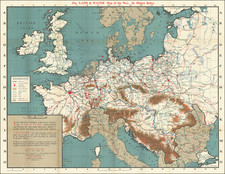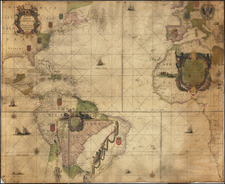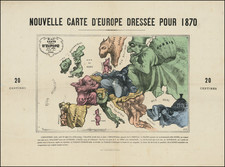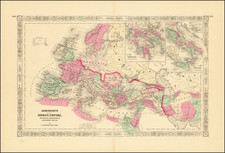Vibrant table of distances engraved by Reiner & Josua Ottens in the mid-18th century, offering an analytical representation of comparative distances between key
The 18th century witnessed considerable developments in European connectivity. Enhanced trade routes, both terrestrial and maritime, facilitated cultural exchanges and the dissemination of knowledge. In this context, the Poliometria functioned as a reference for travelers and merchants, highlighting the web of cities becoming more intertwined through various modes of exchange. The emphasis on German cities points to the region's central geographical role in Europe and its significance in commerce and culture.
The table's numerical grid showcases the evolving cartographic methodologies of the time. This grid system was designed to allow quick and accurate estimation of distances between cities, an essential tool for both travel and trade.
The Ottens brothers, Reiner and Joshua, operated a successful printing partnership in the mid-eighteenth century (fl. 1726-1765). They began the venture in 1726, publishing maps and other prints as “R & I Ottens.” They specialized in the reprinting of others’ work, especially Guillaume De L’Isle. In 1750, Reiner died; his soon, also Reiner, took his place, but the firm began listing their works as “Joshua & Reiner Ottens.” The firm lasted until Joshua’s death in 1765. Joshua’s widow, Johanna de Lindt, sold their remaining stock of plates in 1784.













![(Second World War - Prelude to War) Die Luftbedrohung Deutschlands [The Air Threat to Germany]](https://storage.googleapis.com/raremaps/img/small/84075.jpg)
![[Untitled Map of The Atlantic Ocean, Europe, Africa, the Middle East, and Eastern Canada]](https://storage.googleapis.com/raremaps/img/small/89582.jpg)